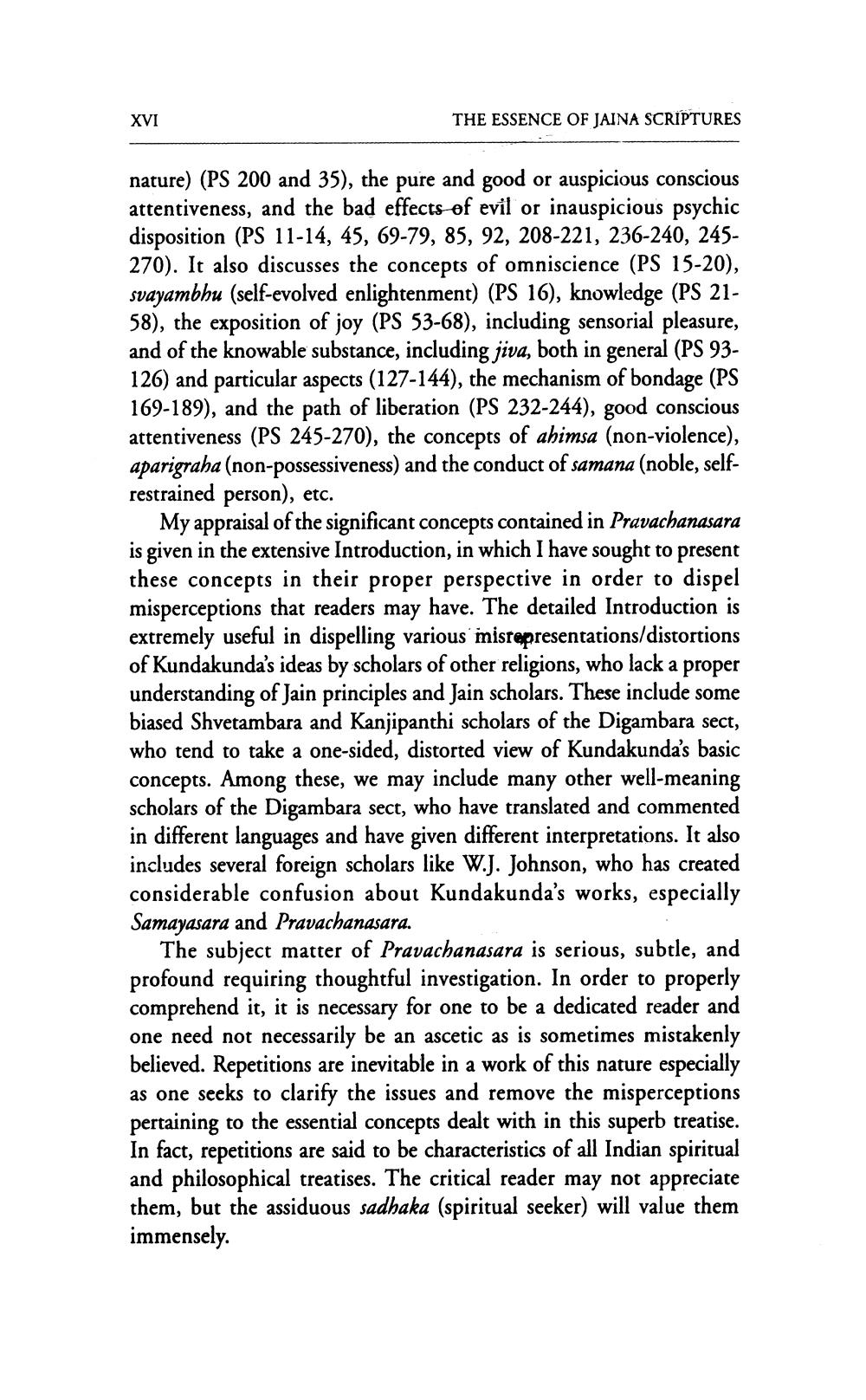________________
XVI
THE ESSENCE OF JAINA SCRIPTURES
nature) (PS 200 and 35), the pure and good or auspicious conscious attentiveness, and the bad effects of evil or inauspicious psychic disposition (PS 11-14, 45, 69-79, 85, 92, 208-221, 236-240, 245270). It also discusses the concepts of omniscience (PS 15-20), svayambhu (self-evolved enlightenment) (PS 16), knowledge (PS 2158), the exposition of joy (PS 53-68), including sensorial pleasure, and of the knowable substance, including jiva, both in general (PS 93126) and particular aspects (127-144), the mechanism of bondage (PS 169-189), and the path of liberation (PS 232-244), good conscious attentiveness (PS 245-270), the concepts of ahimsa (non-violence), aparigraha (non-possessiveness) and the conduct of samana (noble, selfrestrained person), etc.
My appraisal of the significant concepts contained in Pravachanasara is given in the extensive Introduction, in which I have sought to present these concepts in their proper perspective in order to dispel misperceptions that readers may have. The detailed Introduction is extremely useful in dispelling various misrepresentations/distortions of Kundakunda's ideas by scholars of other religions, who lack a proper understanding of Jain principles and Jain scholars. These include some biased Shvetambara and Kanjipanthi scholars of the Digambara sect, who tend to take a one-sided, distorted view of Kundakunda's basic concepts. Among these, we may include many other well-meaning scholars of the Digambara sect, who have translated and commented in different languages and have given different interpretations. It also includes several foreign scholars like W.J. Johnson, who has created considerable confusion about Kundakunda's works, especially Samayasara and Pravachanasara.
The subject matter of Pravachanasara is serious, subtle, and profound requiring thoughtful investigation. In order to properly comprehend it, it is necessary for one to be a dedicated reader and one need not necessarily be an ascetic as is sometimes mistakenly believed. Repetitions are inevitable in a work of this nature especially as one seeks to clarify the issues and remove the misperceptions pertaining to the essential concepts dealt with in this superb treatise. In fact, repetitions are said to be characteristics of all Indian spiritual and philosophical treatises. The critical reader may not appreciate them, but the assiduous sadhaka (spiritual seeker) will value them immensely.




